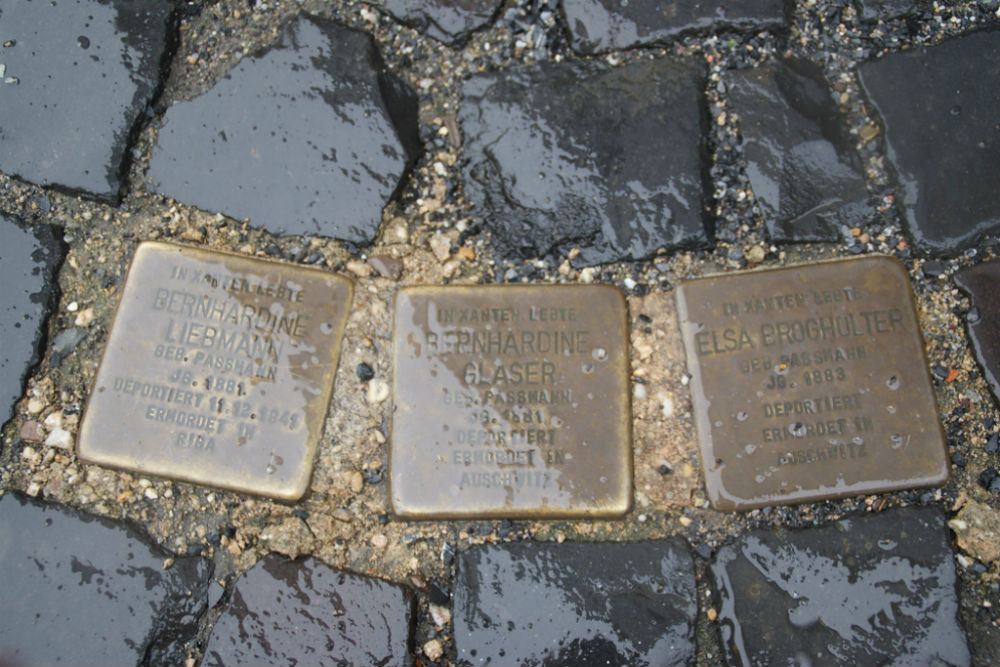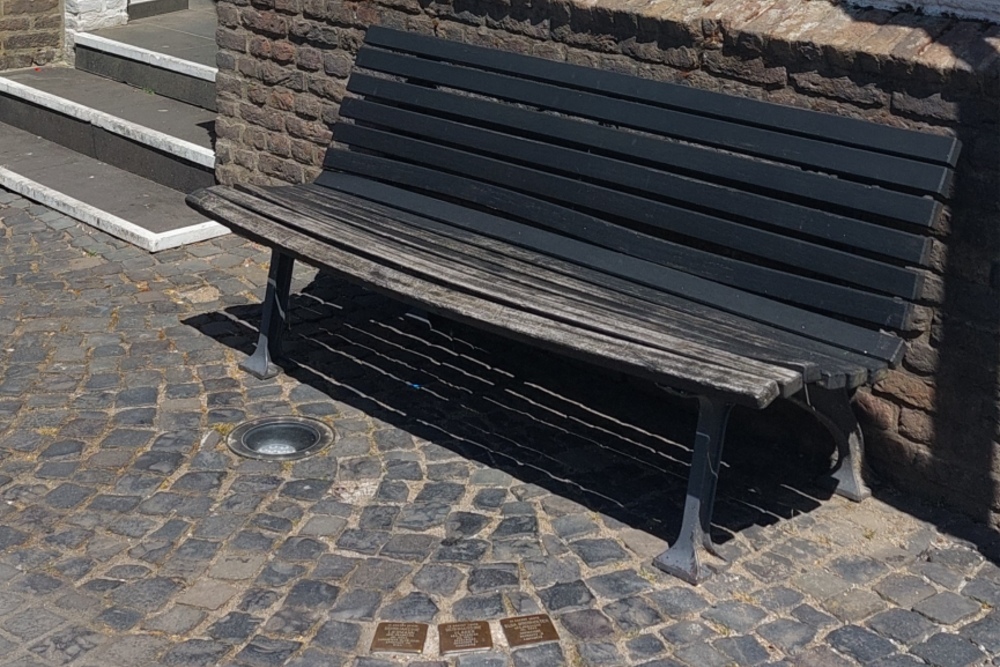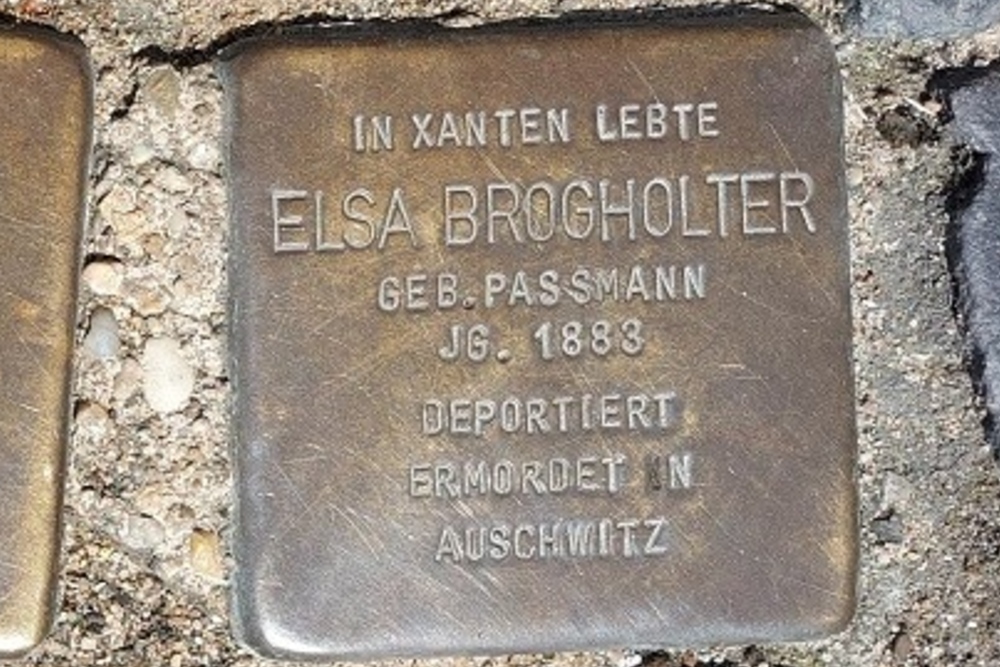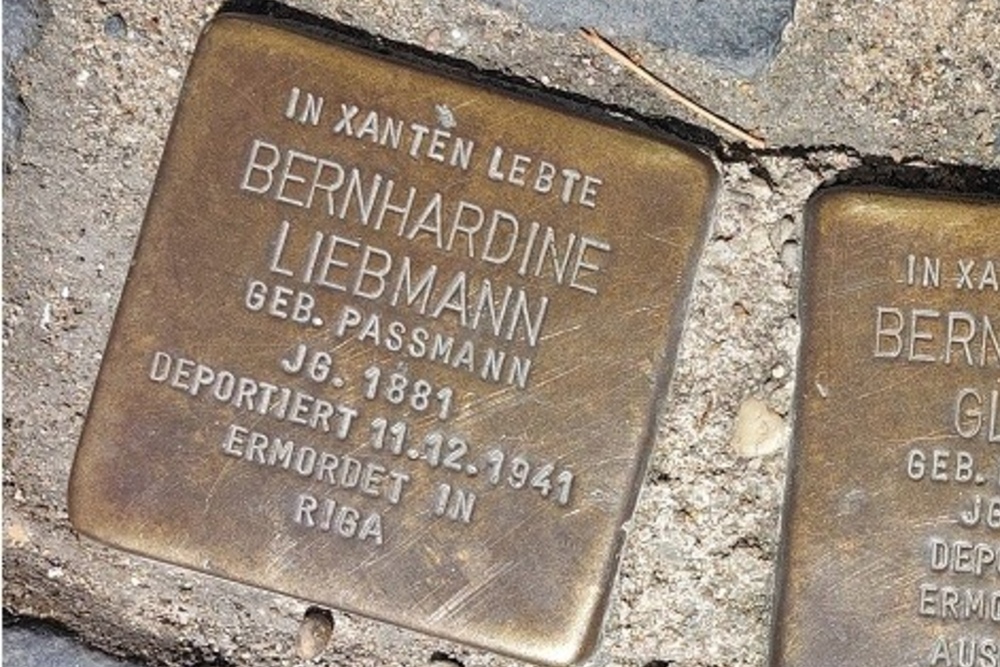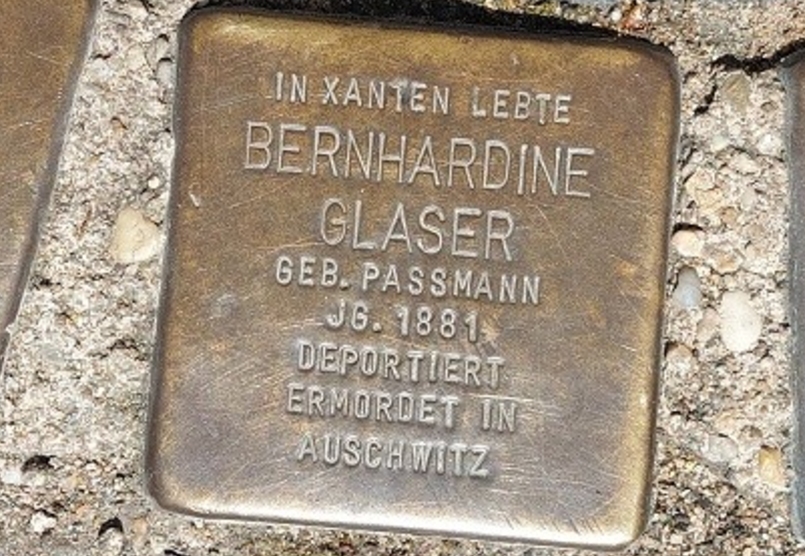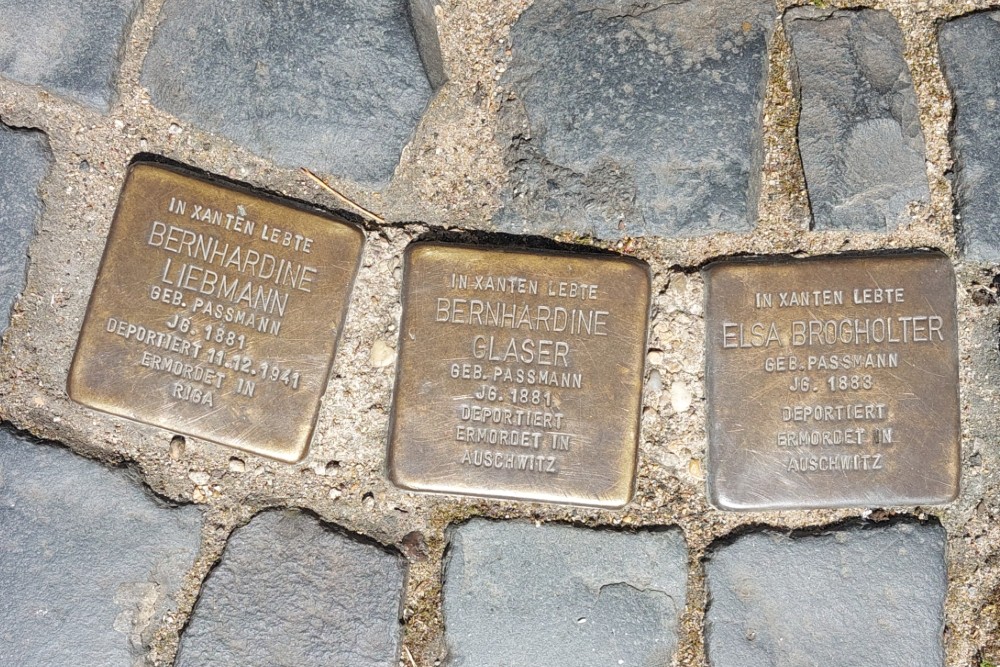Stumbling Stones Karthaus 2
These small brass memorial plaques (Stolpersteine), located at the city-hall, commemorate the Passmann sisters, who were all born in Xanten:
* Bernhardine Liebmann née Passmann, born 1881, deported 11 December 1941, murdered in Riga.
* Bernhardine Glaser née Passmann, born 1881, deported, murdered in Auschwitz.
* Elsa Brogholter née Passmann, born 1883, deported, murdered in Auschwitz.
Bernhardine Passmann, born 3 January 1881, married Alfred Liebmann. Together they ran a leather goods shop in the Marxloh section of Duisberg, Germany. The shop was completely destroyed during Reichspogromnacht (9-10 November 1938); Alfred was arrested and held for a while. Then both were moved to a Judenhaus on Hagedornstraße 32. On December 11, 1942, they were deported to Riga, where traces of them were lost. They were declared dead in 1945. Stolpersteine for both were installed at Hagedornstraße 32 Duisberg.
Bernhardine Passmann, born 09 June 1881, married Isaac Glaser in 1902. They celebrated their 25th anniversary in 1927. They lived in Nijmegen, Netherlands, with her sister Elsa’s family. Bernhardine and Isaac had four children; one died in 1929; the other three were all murdered in the Holocaust –Jonas in Central Europe, Rosette in Auschwitz, and Alfred in Sobibor.
Elsa Passmann, born 1883, married Nathan Brogholter in 1919 in Nijmegen, Netherlands. No children were mentioned. They lived in Nijmegen along with Bernhardine, Isaac, and Rosette Glaser. Nathan Brogholter died in Westerbork in October 1942. Twelve days later, Elsa was killed in Auschwitz.
"Stolpersteine" is an art project for Europe by Gunter Demnig to commemorate victims of National Socialism (Nazism). Stolpersteine (stumbling stones) are small, 10x10cm brass plaques placed in the pavement in front of the last voluntary residence of (mostly Jewish) victims who were murdered by the Nazis. Each plaque is engraved with the victim’s name, date of birth, and place (mostly a concentration camp) and date of death. By doing this, Gunter Demnig gives an individual memorial to each victim. One stone, one name, one person. He cites the Talmud: "A human being is forgotten only when his or her name is forgotten."
Do you have more information about this location? Inform us!
Source
- Text: Fedor de Vries & Anne Palmer
- Photos: Joop van Dyck (1), Peter Schipper (2, 3, 4, 5, 6)
- Gedenkbuch
- Joods Monument
- Wochen Anzeiger Local Kompass: Liebmann, 18 Feb 2014
- Stolpersteine.eu
Nearby
Point of interest
- Ammunition Storage MUNA Xanten - Xanten
- Ammunition Storage MUNA Xanten - Xanten
- Ammunition Storage MUNA Xanten - Xanten
Monument
Cemetery
- German War Graves Xanten - Xanten
- German War Graves Lüttingen - Lüttingen
- German War Cemetery Xanten-Vynen - Xanten
